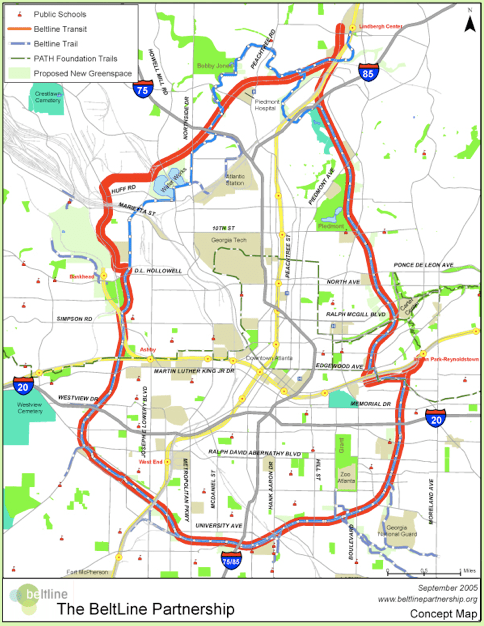Atlanta's BeltLine

Sylvan Hills and Atlanta’s transformative BeltLine project have a special history and a promising future together.
In 1999, Georgia Tech graduate student and former Sylvan Hills resident Ryan Gravel proposed linking multiple city neighborhoods with a new transit system built along underutilized and abandoned railways in the city. Ryan’s thesis inspired the BeltLine, and his original concept has grown to include transit, parks and trails, neighborhood preservation and revitalization, mixed-use development, affordable housing, cleaner air, and an improved tax base–all advancing economic development and quality of life.
Sylvan Hills and Atlanta’s transformative BeltLine project have a special history and a promising future together. In 1999, Georgia Tech graduate student and former Sylvan Hills resident Ryan Gravel proposed linking multiple city neighborhoods with a new transit system built along underutilized and abandoned railways in the city. Ryan’s thesis inspired the BeltLine, and his original concept has grown to include transit, parks and trails, neighborhood preservation and revitalization, mixed-use development, affordable housing, cleaner air, and an improved tax base–all advancing economic development and quality of life.
The BeltLine’s 22 miles of historic rail segments that encircle Atlanta’s urban core connects many of southwest Atlanta’s neighborhoods including our Capitol View, Capitol View Manor, and Adair Park neighbors. With Sylvan Hills’ proximity to these neighborhoods and the Murphy Crossing node planned for the Murphy Avenue and Sylvan Road intersection, Sylvan Hills cannot help but feel the positive impact of this transformative multi-modal transportation project. And, the Ft. McPherson and Oakland City Marta stations give Sylvan Hills convenient connection points to the BeltLine and the new network of parks, residences, and business development around the city. The BeltLine officially opened on September, 29, 2017. Yes, Sylvan Hills is a BeltLine community!
